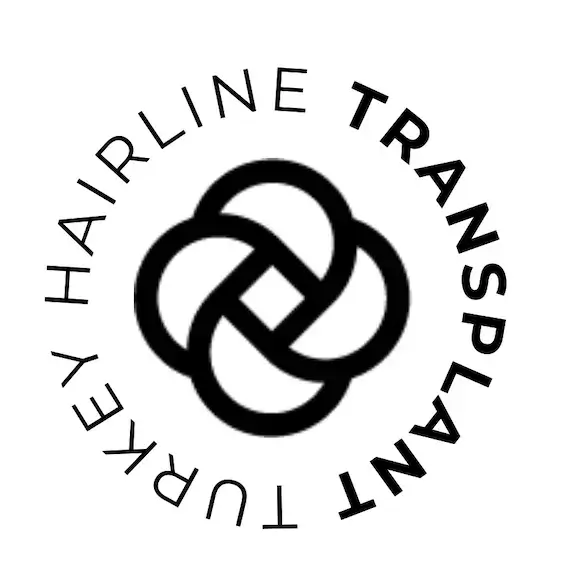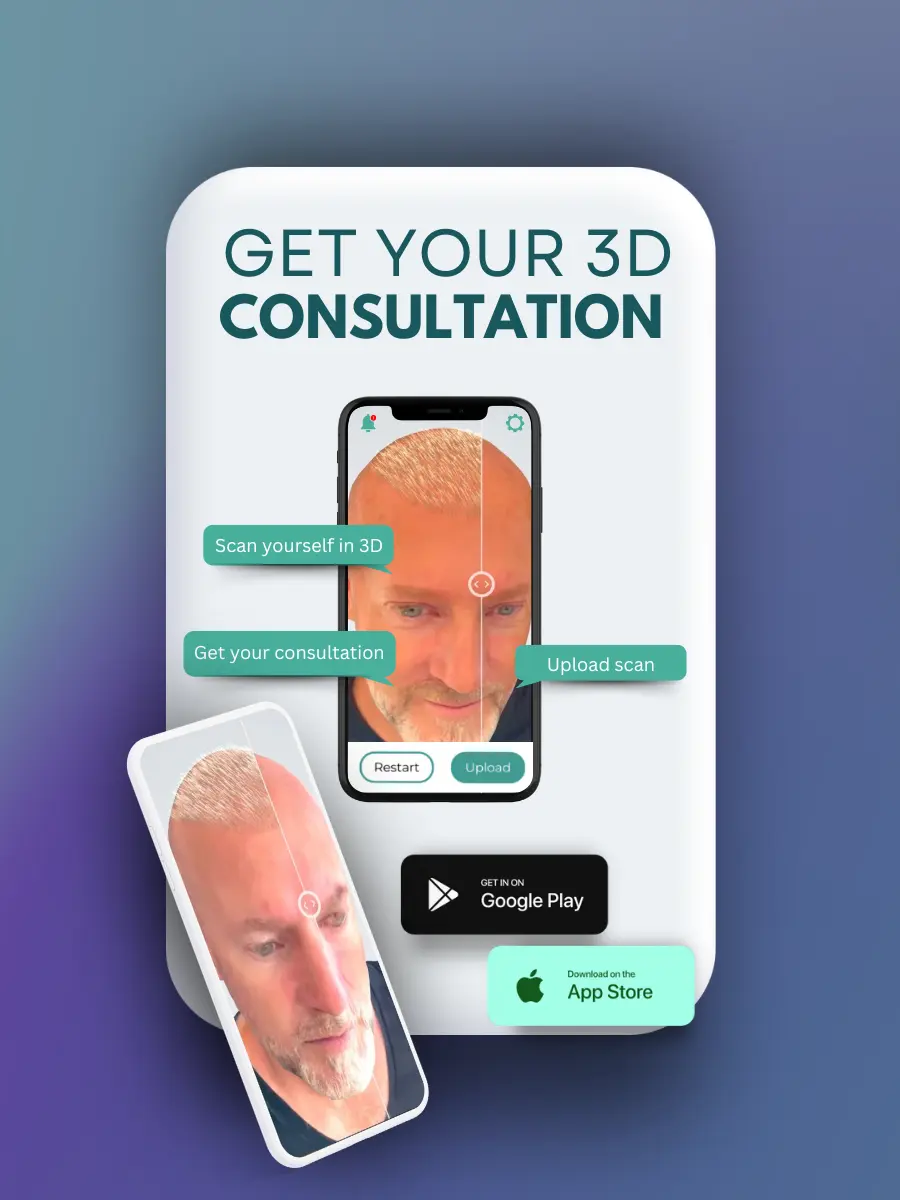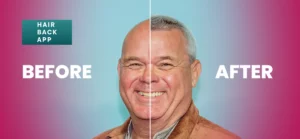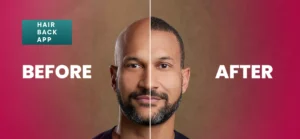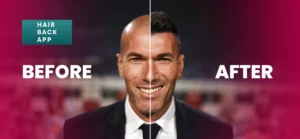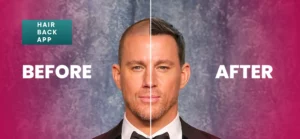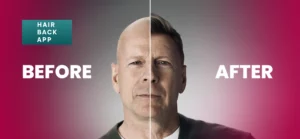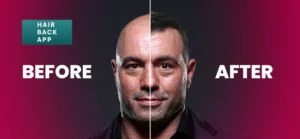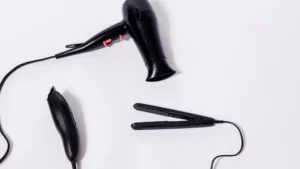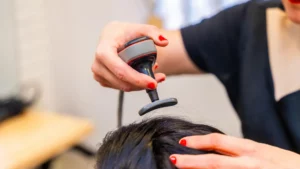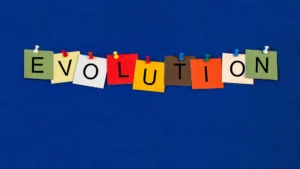Post-transplant hormonal shifts are a critical yet often overlooked aspect of the recovery process after a hair transplant. These hormonal changes can influence the success of the transplant, affect overall health, and even lead to temporary hair-related challenges such as shock loss and winter hair loss.
Understanding the connection between hormones and hair regrowth is essential for anyone undergoing or considering a hair transplant procedure.
My name is Emma Wright, your go-to hair restoration specialist. In this comprehensive guide, we’ll delve into the depths of Post-transplant hormonal shifts, exploring the science behind post-transplant hormonal shifts, their impact on hair growth, and effective ways to manage these changes for optimal results.
Additionally, we will address key concerns like lichen planopilaris, traction alopecia, and hereditary hair loss, providing a comprehensive guide to maintaining healthy hair post-transplant.
What Are Post-Transplant Hormonal Shifts?
Post-transplant hormonal shifts refer to the changes in hormonal balance that occur after undergoing a hair transplant procedure. These shifts can be triggered by the body’s healing process, stress, or even medications prescribed during recovery.
Hormones like testosterone, dihydrotestosterone (DHT), and cortisol can fluctuate, potentially affecting the transplanted and surrounding hair follicles.
For individuals who have experienced hereditary hair loss, these hormonal changes can present a unique challenge. Since DHT is a key driver of this condition, any post-transplant hormonal imbalance could exacerbate shedding in non-transplanted hair.
The Connection Between Hormonal Shifts and Hair Growth Cycles
Hair growth is inherently tied to hormonal balance. Post-transplant hormonal shifts can disrupt the hair growth cycle, which has three main stages:
- Anagen (growth phase)
- Catagen (transition phase)
- Telogen (resting phase)
Fluctuations in hormones may push transplanted or existing hair into the telogen phase prematurely, leading to conditions like shock loss, where transplanted hair sheds temporarily before regrowth. Seasonal changes, such as winter hair loss, may further compound the issue by causing dryness and reduced scalp circulation.
Moreover, underlying scalp conditions like lichen planopilaris can add to the complexity of post-transplant recovery. This autoimmune condition, characterized by inflammation and scarring of hair follicles, may need targeted treatment to ensure successful regrowth.
Managing Post-Transplant Hormonal Shifts
-
Monitor Hormonal Levels
Regular check-ups with a healthcare provider can help identify imbalances early. Blood tests can measure levels of testosterone, estrogen, and cortisol to ensure they are within a healthy range.
-
Stress Management
High cortisol levels from stress can disrupt hair regrowth. Practices such as yoga, meditation, and adequate sleep can significantly reduce stress-induced hormonal disruptions.
-
Nutrition and Supplements
A balanced diet rich in vitamins like biotin, zinc, and vitamin D supports hormonal health and promotes hair regrowth. Supplements targeting hormonal balance may also prove beneficial.
-
Medication and Topical Treatments
- Minoxidil: Commonly used to stimulate hair regrowth, especially in cases of shock loss.
- Finasteride: Helps block DHT, reducing its impact on non-transplanted hair.
These treatments are particularly important for those who have experienced traction alopecia due to prolonged tension on their hair. While traction alopecia is not primarily hormonal, the recovery process can be hindered if post-transplant hormonal shifts are not addressed.

Common Challenges Post-Transplant
-
Shock Loss After Hair Transplant
Shock loss is a temporary shedding of transplanted and existing hair following surgery. While alarming, this condition typically resolves within a few months as the hair enters the anagen phase. Managing post-transplant hormonal shifts plays a crucial role in mitigating the severity of shock loss.
-
Winter Hair Loss
Seasonal changes can exacerbate post-transplant hair challenges. Cold weather reduces scalp circulation, leading to dryness and increased hair shedding. Moisturizing shampoos, scalp massages, and humidifiers can help combat winter hair loss effectively.
Underlying Conditions Affecting Hair Regrowth
Inflammatory conditions like lichen planopilaris or scarring-related issues can complicate hair regrowth after a transplant. Although these conditions are not directly tied to hormonal changes, they require close management to ensure that transplanted follicles can thrive. A consultation with a dermatologist can help diagnose and treat these issues early.
For individuals dealing with hereditary hair loss, the role of dihydrotestosterone (DHT) remains significant even after transplantation. Addressing this through medications like finasteride can help protect both transplanted and existing hair from further loss.
Tips for Maintaining Healthy Hair Post-Transplant
- Stay Hydrated: Proper hydration supports overall health and scalp circulation.
- Protect Your Scalp: Use sunscreen or hats to shield the scalp from UV damage, especially in the early stages of recovery.
- Follow Post-Operative Instructions: Adhering to your surgeon’s guidelines, including the use of prescribed medications and avoiding strenuous activities, ensures optimal recovery.
- Invest in Scalp Care: Regular cleansing, moisturizing, and massaging can improve scalp health and reduce the risk of complications.
Addressing conditions like traction alopecia can also be important in this phase. Patients who develop this condition from improper hair handling post-transplant should focus on gentle scalp care and avoid hairstyles that place tension on the follicles.
The Psychological Impact of Post-Transplant Hormonal Shifts
The physical changes brought about by post-transplant hormonal shifts can also have emotional effects. Temporary setbacks like shock loss or winter hair loss may cause anxiety or frustration, especially when immediate results are expected. It’s important to remember that hair regrowth is a gradual process, often requiring 9–12 months for full results.
Seeking support from online communities, friends, or a mental health professional can provide encouragement during this transitional period.
Final Thoughts on Post-Transplant Hormonal Shifts
Post-transplant hormonal shifts are a natural part of the recovery process. While they may introduce temporary challenges such as shock loss after hair transplant or exacerbate conditions like lichen planopilaris and traction alopecia, understanding and managing these shifts can lead to successful outcomes.
By addressing hormonal imbalances through a combination of medical support, lifestyle adjustments, and proper scalp care, individuals can navigate post-transplant hormonal shifts effectively.
Whether you’re dealing with hereditary hair loss or exploring solutions for winter-related shedding, being proactive in your approach is key to achieving and maintaining healthy, thriving hair.
Remember, every step you take toward recovery contributes not only to your hair but also to your overall well-being.
